Ford Ranger vs Tesla Model 3 – Differences & prices compared
Compare performance, boot space, consumption and price in one view.
Find out now: which car is the better choice for you – Ford Ranger or Tesla Model 3?
The Ford Ranger (Pickup) comes with a Diesel, Petrol or Plugin Hybrid engine and Manuel or Automatic transmission. In comparison, the Tesla Model 3 (Hatchback) features a Electric engine with Automatic transmission.
When it comes to boot capacity, the Ford Ranger offers , while the Tesla Model 3 provides 594 L – depending on how much space you need. If you’re looking for more power, decide whether the 292 HP of the Ford Ranger or the 627 HP of the Tesla Model 3 suits your needs better.
In terms of consumption, the values are 3.10 L per 100 km for the Ford Ranger, and 13.20 kWh for the Tesla Model 3.
Price-wise, the Ford Ranger starts at 34500 £, while the Tesla Model 3 is available from 34300 £. Compare all the details and find out which model fits your lifestyle best!
In a head-to-head comparison between the Ford Ranger and the Tesla Model 3, these vehicles cater to distinctly different driving needs and preferences. The Ford Ranger offers rugged performance and practicality as a traditional pickup truck, ideal for outdoor adventures and heavy-duty tasks. Meanwhile, the Tesla Model 3 stands out with its electric powertrain and cutting-edge technology, providing a futuristic driving experience focused on sustainability and innovation.
Ford Ranger
The Ford Ranger stands out in the pickup market with its robust build and versatile capabilities, making it a popular choice for both work and leisure. Its modern design is complemented by a well-equipped interior, providing comfort and advanced technology. Whether tackling challenging terrains or cruising through the city, the Ranger delivers a reliable and dynamic driving experience.
details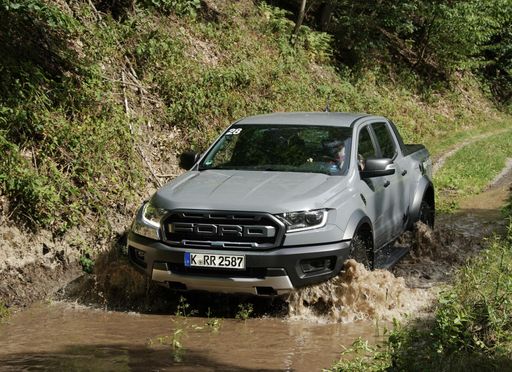 @ media.ford.com
@ media.ford.com
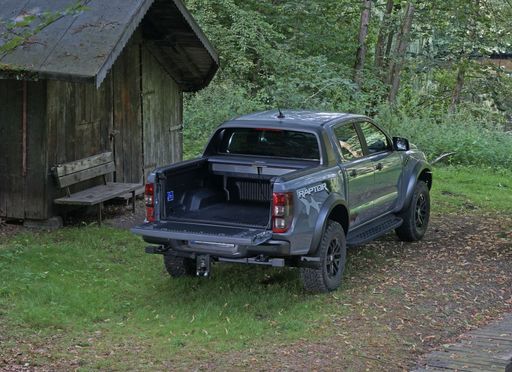 @ media.ford.com
@ media.ford.com
Tesla Model 3
The Tesla Model 3 stands out in the electric vehicle market with its sleek design and impressive performance capabilities. It offers a seamless driving experience that combines advanced technology with minimalistic interiors, creating a futuristic feel on the road. Additionally, its range and charging infrastructure make it a practical choice for both city commuting and longer journeys.
details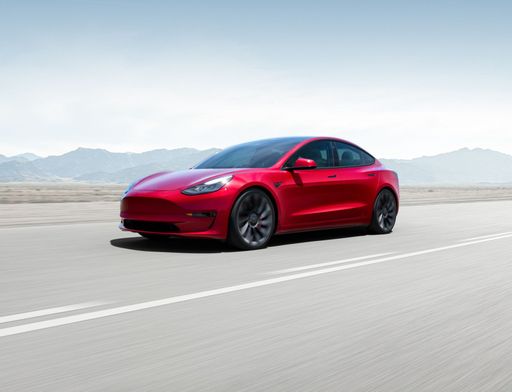 @ tesla.com
@ tesla.com
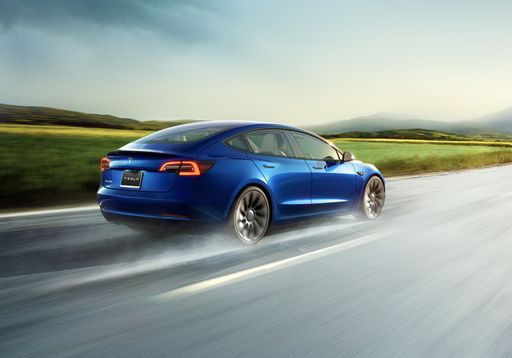 @ tesla.com
@ tesla.com
 @ tesla.com
@ tesla.com
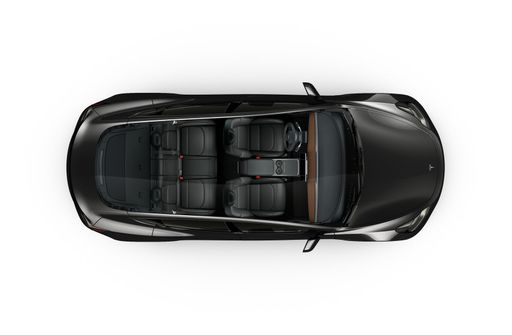 @ tesla.com
@ tesla.com
Ford Ranger vs. Tesla Model 3: A Tech-Infused Odyssey
The automotive realm witnesses an unfathomable comparison: the rugged Ford Ranger goes head-to-head against the innovative Tesla Model 3. In this showdown between diesel-driven power and electric efficiency, the choice hinges on what matters most to you - raw durability or cutting-edge innovation.
Design and Body Type
The Ford Ranger embodies the essence of a traditional pickup, showcasing a robust design catered for off-road adventures and utility. With seating options for up to five passengers, it promises versatility, offering various configurations in body structure with two or four doors.
Conversely, the Tesla Model 3 breaks conventional molds with its sleek hatchback design, eyeing futuristic aesthetics. With a steadfast dedication to electric efficiency, the Model 3’s five-door layout caters to modern drivers seeking style and substance.
Innovation in Engines and Transmissions
Empowered by both diesel and petrol options, the Ford Ranger packs a punch with engine capacities ranging from 2000 to 3000 cm³ and power from 170 to 292 HP. The robust manual and automatic gearboxes complement its all-wheel-drive system, delivering power precisely when needed.
Tesla’s electric prowess is evident in the Model 3. All-electric with rear and all-wheel drive options, the Model 3 commands the highway with up to 460 HP from a reduction gearbox. Efficiency remains a cornerstone, with consumption as low as 12.5 kWh/100km.
Performance and Efficiency
The Ford Ranger thrives off-road with a maximum speed of 190 km/h and acceleration from 0-100 km/h between 7.9 to 12.1 seconds, depending on the variant. Its payload capacity nears 1108 kg, showcasing strength suited for any terrain. However, with a CO2 efficiency class of G, it remains environmentally unyielding.
In stark contrast, the Model 3 reaches a top speed of 262 km/h, and its thrilling acceleration, going from 0-100 km/h between 3.1 to 6.1 seconds, showcases electric agility. With an innovative range between 513 to 702 km, the Model 3 flaunts unparalleled energy efficiency promising zero emissions.
Dimensional Endeavors
The Ranger’s impressive build ranges in length from 5370mm to 5420mm, with heights peaking at 1922mm, boasting a substantial curb weight up to 2486 kg. It straddles utility and boldness, ready for the rough roads ahead.
The Model 3’s aerodynamic dimensions stand at 4720mm in length and a slender 1440 to 1441mm in height. Despite its smaller stature, the Model 3 maximizes its interior space with a 594 L trunk capacity while keeping the curb weight under 1919 kg.
Final Thoughts
The Ford Ranger and Tesla Model 3 offer starkly different realms of automotive innovation. The Ranger’s diesel grit embodies raw strength, ready for traditional adventure seekers. In contrast, the Model 3 heralds the electric future, alluring with its technology-driven efficiency aimed at the eco-conscious.
Your choice hinges on preference: trailblazing electric innovation or steadfast diesel reliability? The path you tread defines the destination you cherish. Embark on your journey accordingly.

|

|
|
|
|
Costs and Consumption |
|
|---|---|
|
Price
34500 - 68800 £
|
Price
34300 - 50100 £
|
|
Consumption L/100km
3.1 - 13.8 L
|
Consumption L/100km
-
|
|
Consumption kWh/100km
-
|
Consumption kWh/100km
13.2 - 16.7 kWh
|
|
Electric Range
50 km
|
Electric Range
513 - 702 km
|
|
Battery Capacity
11.80 kWh
|
Battery Capacity
62 - 79 kWh
|
|
co2
70 - 315 g/km
|
co2
0 g/km
|
|
Fuel tank capacity
80 L
|
Fuel tank capacity
-
|
Dimensions and Body |
|
|---|---|
|
Body Type
Pickup
|
Body Type
Hatchback
|
|
Seats
2 - 5
|
Seats
5
|
|
Doors
2 - 4
|
Doors
5
|
|
Curb weight
2082 - 2486 kg
|
Curb weight
1822 - 1929 kg
|
|
Trunk capacity
-
|
Trunk capacity
594 L
|
|
Length
5370 - 5420 mm
|
Length
4720 - 4724 mm
|
|
Width
1918 - 1968 mm
|
Width
1850 mm
|
|
Height
1868 - 1922 mm
|
Height
1431 - 1440 mm
|
|
Payload
676 - 1108 kg
|
Payload
303 - 333 kg
|
Engine and Performance |
|
|---|---|
|
Engine Type
Diesel, Petrol, Plugin Hybrid
|
Engine Type
Electric
|
|
Transmission
Manuel, Automatic
|
Transmission
Automatic
|
|
Transmission Detail
Manual Gearbox, Automatic Gearbox
|
Transmission Detail
-
|
|
Drive Type
All-Wheel Drive
|
Drive Type
Rear-Wheel Drive, All-Wheel Drive
|
|
Power HP
170 - 292 HP
|
Power HP
283 - 627 HP
|
|
Acceleration 0-100km/h
7.9 - 12.1 s
|
Acceleration 0-100km/h
3.1 - 6.1 s
|
|
Max Speed
180 - 190 km/h
|
Max Speed
201 - 262 km/h
|
|
Torque
405 - 697 Nm
|
Torque
420 - 660 Nm
|
|
Number of Cylinders
4 - 6
|
Number of Cylinders
-
|
|
Power kW
125 - 215 kW
|
Power kW
208 - 461 kW
|
|
Engine capacity
1996 - 2993 cm3
|
Engine capacity
-
|
General |
|
|---|---|
|
Model Year
2022 - 2025
|
Model Year
2023 - 2024
|
|
CO2 Efficiency Class
G, B
|
CO2 Efficiency Class
A
|
|
Brand
Ford
|
Brand
Tesla
|
Ford Ranger
A Comprehensive Look at the Ford Ranger: Versatility Meets Innovation
The Ford Ranger has long been a staple in the world of pick-up trucks, renowned for its robust design and versatility. Whether for rugged off-road adventures or everyday utility tasks, the Ford Ranger continues to be a frontrunner in the pick-up segment. In this article, we explore the technical details and innovative features that set the latest versions of the Ford Ranger apart from its competitors.
Powertrain Performance: A Range of Choices
The Ford Ranger offers a selection of powerful engines, catering to a diverse set of user requirements. Engine options range from the fuel-efficient 2.0-litre EcoBlue diesel engine to the robust 3.0-litre EcoBoost petrol engine, offering impressive outputs from 170 to 292 PS. These engines are paired with either a manual or an advanced automatic transmission, both providing smooth shifting and optimised performance across various driving conditions.
The Ranger’s all-wheel-drive system ensures a robust off-road capability while maintaining a composed ride on urban roads. With torque figures ranging between 405 Nm and 600 Nm, the Ranger guarantees ample pulling power whether you're on or off the beaten track.
Fuel Efficiency and Environmental Considerations
Recognising the importance of balancing performance with efficiency, the Ford Ranger delivers competitive fuel consumption figures ranging from 8.4 to 13.8 litres per 100 km. Despite its robust performance capabilities, the Ranger remains mindful of its environmental footprint, maintaining a functional balance between power and efficiency with a CO2 efficiency class of G.
Advanced Safety and Technology Features
Incorporating cutting-edge technology, the Ford Ranger is equipped with a suite of safety features designed to protect both passengers and payload. Among these are adaptive cruise control, lane-keeping assistance, and a pre-collision assist system, enhancing the driver's ability to navigate both rural roads and busy motorways safely and efficiently.
Moreover, the interior tech suite includes an intuitive infotainment system, complete with connectivity options for seamless integration of smartphones and smart devices. This ensures drivers and passengers can stay connected and entertained on all journeys.
Customisation and Comfort
The Ford Ranger offers a variety of trim levels, allowing customers to tailor the vehicle to their specific needs. From the rugged XL 4x4 to the luxurious Platinum e-4WD Automatik, there is a model to suit every preference and requirement. Equipment lines such as Wildtrak and MS-RT add enhanced styling and additional features for those seeking a more distinctive and upscale appearance.
Inside, the Ranger provides comfortable seating configurations for up to five passengers, with premium materials and ample storage space to ensure every journey is a pleasant experience. Users can also benefit from a range of comfort features, including climate control, premium audio systems, and adjustable seating.
Practicality Meets Payload
The Ford Ranger excels in practicality with its impressive payload capacity and spacious cargo bed, suitable for carrying everything from work equipment to recreational gear. With a maximum payload of up to 1,108 kg, the Ranger is more than capable of handling heavy loads, making it an ideal choice for both professional and personal use.
Additionally, the robust chassis and durable build quality provide long-lasting performance even under the most demanding conditions, ensuring reliability and endurance in the long term.
Conclusion: A Resilient Companion for All Terrains
With its capable engine choices, outstanding off-road capabilities, and a host of advanced features, the Ford Ranger continues to lead the way in the pick-up truck category. Whether for practical utility, adventurous pursuits, or simply as a reliable daily vehicle, the Ranger delivers on all fronts – a true testament to Ford’s commitment to innovation and quality in the automotive industry.
Tesla Model 3
Introduction to the Tesla Model 3
The Tesla Model 3 has quickly become a beacon of innovation in the world of electric vehicles (EVs), embodying a perfect blend of performance, technology, and sustainability. Known for redefining the electric car experience, the Model 3 stands as a testament to Tesla's commitment to pushing the boundaries of automotive design and engineering.
Design and Build
With its sleek fastback silhouette, the Tesla Model 3 is not only visually captivating but also aerodynamically efficient. Measuring at 4720 mm in length, 1850 mm in width, and 1441 mm in height, it optimally combines aesthetics with functionality. The Model 3 boasts a 594-litre boot space, offering ample room for everyday storage needs. Built with environmental efficiency in mind, its CO2 efficiency rating stands proudly at a perfect A, making it an ideal choice for the eco-conscious driver.
Powertrain and Performance
Under the bonnet, the Model 3 offers a diverse range of powertrains. It is available in both rear-wheel drive (RWD) and all-wheel drive (AWD) options, catering to different driving preferences. The electric motors deliver a remarkable power output ranging from 283 to 460 PS, translating to 208 to 338 kW. Depending on the variant, the Model 3 can accelerate from 0 to 100 km/h in a staggering 3.1 to 6.1 seconds. With a top speed between 201 and 262 km/h, the Model 3 promises an exhilarating driving experience.
Battery and Range
The Model 3 is equipped with a robust battery pack, available in capacities ranging from 62 to 79 kWh. This ensures an impressive electric range of 513 to 629 km on a single charge, catering perfectly to both city drivers and those who frequently embark on long-distance journeys. The energy consumption is between 13.2 to 16.5 kWh per 100 km, showcasing Tesla's efficiency in engineering cutting-edge EV technology.
Technological Innovations
The interior of the Model 3 is where technology takes centre stage. With its state-of-the-art autopilot feature, semi-autonomous driving is not just a promise but a reality. The vehicle continually updates over-the-air, ensuring that the software is always up-to-date with the latest features and improvements. Furthermore, the minimalist interior design, accentuated by a massive central touchscreen display, epitomises modernity and enhances the user experience with intuitive controls and navigation.
Cost Considerations
Given its advanced features and performance capabilities, the Model 3's price point ranges from €42,490 to €58,490. Monthly operating costs are estimated to be between €1,073 and €1,397, with per-kilometre costs between 42.9 and 55.9 cents, making it a competitively priced option within the premium EV market segment.
Conclusion
The Tesla Model 3 continues to lead the charge in the electric revolution, offering a compelling package of performance, innovation, and sustainability. For anyone seeking a modern, efficient, and technologically advanced vehicle, the Model 3 deserves serious consideration. With Tesla's groundbreaking vision and innovative engineering, this vehicle is not merely an investment in cutting-edge technology but also in a sustainable future.
Which drive types are available for the Ford Ranger?
Available as All-Wheel Drive.
The prices and data displayed are estimates based on German list prices and may vary by country. This information is not legally binding.
